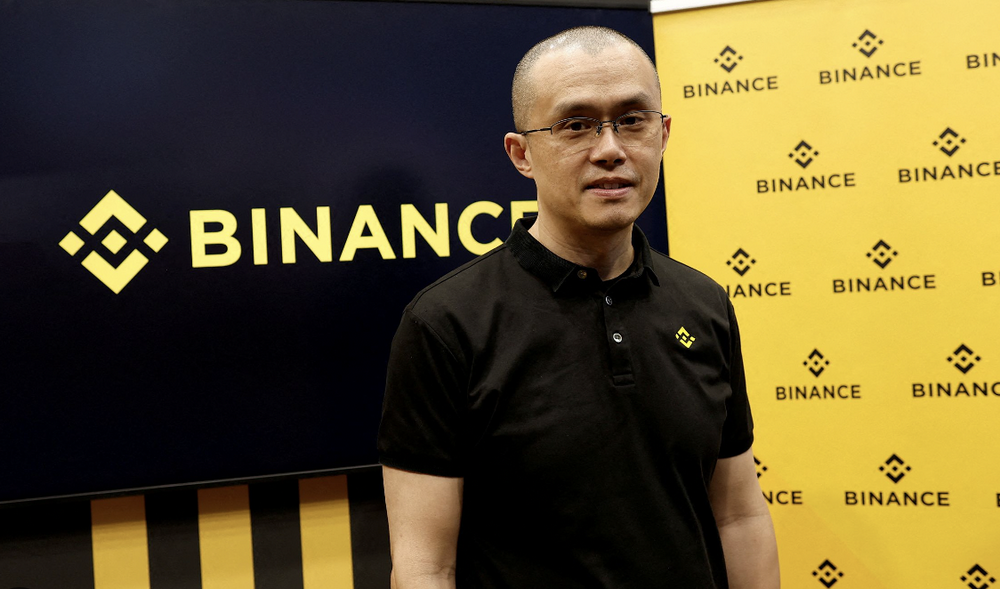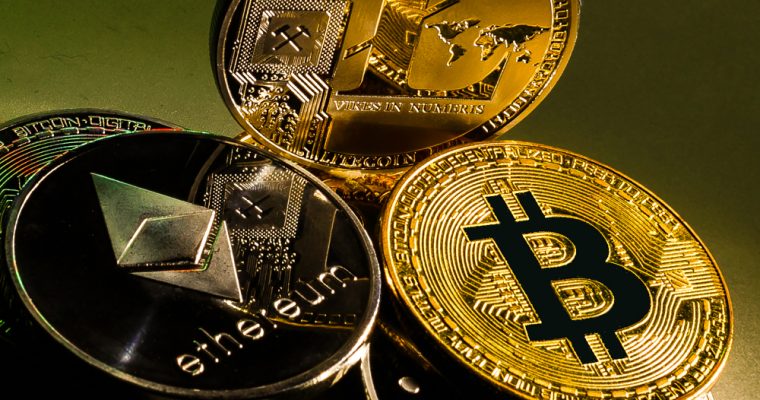Bitcoin is a big one, cross-chain is a pseudo-demand?
The Internet allows us to achieve free access and transmission of information. However, for the blockchain world, the data is isolated from the respective chains, and therefore, we call them the island of value.
Existing networks (such as Bitcoin and Ethereum) are trying to solve a unique set of requirements, such as Bitcoin as a value store, and Ethereum's goal is as a general-purpose computing platform that can be issued as a token. Application carrier such as DeFi.
Obviously, we hope that inter-operation between the blockchains can be achieved. This technology is collectively referred to as Cross-chain. From the perspective of most people, cross-chain technology is an emerging technology. Allows the transfer of value and information between different blockchain networks.
Cross-chain protocols ensure interoperability between blockchains, enabling value and information exchange between different networks. The entire process is best done without any downtime or expensive transaction costs.
- QKL123 market analysis | The cottage currency is the first counterattack? Need new funds to break (0812)
- report! This 14,000-person hacker organization is eyeing the exchange | DVP hackers are coming to an end
- Ethereum also has a coin tool, and privacy transactions are not cash patents.
At present, the projects and agreements that focus on cross-chain slogans in the market are exquisite, what are their current statuses and whether they really have a future?
This is a question that this article is trying to explore.
First, what is the status quo of cross-chain? (take lightning network, Cosmos and Polkadot as examples)
As mentioned above, there are many types of projects related to cross-chain, such as Ripple, Lightning Network (LN), Polkadot (Poca), Aion, Wanchain, Cosmos, etc., and currently widely concerned are lightning network, Cosmos and Polkadot. (Poca) these three.
This article uses them as an example:
1, 1 cross-chain of lightning network
Simply put, the cross-chain of lightning networks is implemented like this:
When the lightning network is deployed on multiple blockchains, the tokens of these blockchains can be immediately exchanged in a relatively decentralized, low-trust manner. This is an atomic swap process implemented by hash-locking. . For example, Alice wants to send Bob some Litecoin, but she only has Bitcoin, so she can do this through a third-party lightning network that holds both Bitcoin and Litecoin.

Although this relatively decentralized exchange method sounds magical in theory, developers have also raised some security risks, such as lightning network participants can delay transaction processing, through this defect, users can pause from Bitcoin to Wright Exchange currency and see how the exchange rate changes over the next 24 hours. If the exchange rate benefits the user, they will complete the transaction. If the exchange rate is not good for them, it will lead to the failure of the transaction. Using this approach, users can make money by simply canceling unprofitable transactions and accepting profitable trades.
So far, developers have successfully tested BTC and LTC, as well as the atomic interchange process between BTC and ETH through lightning network, but they have not been widely used.
1, 2 Cosmos cross-chain
Cosmos's cross-chain involves the concept of hub and zone, and the exchange of ETH into BTC via the Cosmos network, the process would be like this:

(Photo by Kerman Kohli)
- Create a trusted intermediate zone for Ethereum, and there will be a set of verifiers responsible for relaying messages from the Ethereum bridge zone to Cosmos Hub.
- The verifier must wait for a certain amount of transaction confirmation to ensure the actual conduct of the transaction;
- Once the verifier confirms that the transaction is final, they will initiate a transaction from their zone to Cosmos Hub confirming receipt of the Ethereum, and then the Cosmos Hub will create a Cosmos Ether in the form of a parcel, and the other Cosmos zone will You will be aware of the new Cosmos Ethercoin package in the system.
- Assuming the exchange rate is determined in advance, the packaged Cosmos Ethercoin will be converted into Cosmos Bitcoin. The wrapped Cosmos bitcoin is then sent to the trusted intermediate bitcoin zone and sent to the actual bitcoin address.
Through the above process, we completed the cross-chain operation of the Ethereum chain and the bitcoin chain.
This model needs to pay attention to some issues:
- Cosmos Hub is required to ensure the correct calculation of the balance of the Cosmos assets. Although this is a potential shortcoming, the Cosmos team has designed a system that anyone can build their own hub. In essence, Cosmos will be a network of Hubs and Zones run by different groups;
- In fact, each zone must be trusted, and people trust that they are relaying the correct message about the sending and receiving of the asset. The sender also needs to trust that the set of verifiers will relay their messages correctly instead of stealing their assets;
1, 3 Polkadot cross-chain
We know that Polkadot is a cross-chain platform built by Ethereine's former technical brain Gavin Wood, which is expected to launch its main network by the end of this year.
In the Polkadot ecosystem, there are the following roles:
- Collector: Generates a block for a parallel chain (Parachain) and passes the information to the verifier for verification;
- Nominator: allocates its capital to the verifier to participate in the staking mechanism;
- Validator: (1) write a new block, (2) finalize the relay chain by participating in
GRANDPA, (3) verify the parallel chain by ensuring that the transaction occurred is correct, and the cross-chain message has been processed to verify the parallel chain (Parachain) Block) - Fishermen: Bounty hunters who observe other nodes on the network and “fish” malicious acts;

(Image courtesy of: polkadot white paper)
You can think of Polkadot as an interconnected system that connects to other blockchains that want to communicate through the Polkadot bridge. All Parachains and Relay Chains operate as a unified system. Parachains can contain custom logic and handle their own state transitions while receiving and sending messages to other chains. Parallel chains can listen to each other and communicate with each other, which is different from Cosmos's cross-chain logic. Cosmos cross-chain needs to be relayed through the Hub.
It can be said that the purpose of Polkadot is to achieve an inter-chain communication framework that does not require trust.
Let's take the exchange of ETH and BTC as an example to illustrate how the cross-chain of Polkadot works:
The Ethereum parallel chain collector (collator) passes the data from the ETH block header to the verifier in its parallel chain. The verifier will then sign in the Ethereum bridge smart contract in a format that the parallel chain zone can recognize and communicate. And release related transactions. Any ETH sent will be held by a wave card verifier set, which will also provide DOT (po card) as collateral for invalid transactions. The Ethereum parallel chain will in turn communicate with the Bitcoin parallel chain, which will release the BTC to the specified address by controlling the set of verifiers for that particular parallel chain.
It can be seen that the biggest feature of the Polkadot design is that it does not require trust.
One thing to note is that Polkadot's parallel chain mechanism will distribute parallel chain slots through unlicensed chain auctions. When the parallel chain contains a critical bug or has some malicious purpose, governance will intervene and aim to fix the situation.
It should be noted that lightning network, Cosmos and Polkadot are at a very early stage regarding interoperability issues.
For example, Cosmos was launched in March 2019, but only started and ran Cosmos Hub, its IBC framework is expected to land in November this year , and Polkadot is scheduled to go live at the end of 2019, but it is involved in the relay chain.
Second, does the cross-chain really have a market?
The above talked about the three major cross-chain stars, then let's talk about it now, is the market demand for cross-chaining considerable?
Since the current market share of Bitcoin is close to 70%, and may even further increase, the current status of the entire blockchain market is roughly the same:

(Figure: blockchain asset world)
As shown in the figure, Bitcoin is the largest and most popular blockchain network, which is the continent with the largest footprint in the world, and cryptographic assets such as ETH, XRP, BCH, LTC, BNB, USDT, EOS, and BSV. It is a relatively large continent, and the rest of the assets can only be counted as islands, or even a village separated by less than tens of meters.
And our imaginary cross-chain network might look like this:

(Figure: imaginary cross-chain network)
As shown in the figure, we may use the cross-chain as a bridge, which is used to connect the various land floor blocks of the blockchain world, and the cross-chain project is like a new continent dedicated to building bridges, and their ultimate goal is to create a Very complex decentralized internet.
But in reality, cross-chaining is not just done by bridges. In the early stages, people will be more willing to use ships to cross the mainland. First, because the distance between the continents is too far away, it is not realistic to build bridges. The ship is more free and wants to go wherever you go .
In addition, in the Bitcoin community, many people do not want other blockchain continents to connect directly to the BTC continent through bridges, because this is not good for them.
Perhaps for similar or other reasons, at this stage, people will be more inclined to use centralized exchanges to exchange between blockchain assets, which is like a real ship, people need to trust these centralization and No technically difficult facilities.
The cross-chain solutions currently on the market are like building airplanes or bridges, but they have not been widely used due to their technical and implementation difficulties.
Fourth, thinking about cross-chain in the future
In fact, the meaning of cross-chain is also very relevant to the distribution of the entire market. For example, when bitcoin dominates (accounting for more than 70%), there is not much significance in cross-chaining, because there is basically only BTC in the market. The value is obvious, the rest can only be regarded as shitcoin, the centralized exchange can basically meet people's interaction needs.
And when the application of each blockchain really landed, the market is full of flowers (the market share of Bitcoin is not so excessive, such as long-term less than 50%), the value of cross-chain will be truly reflected, but this will never be caused by A market that can be monopolized by a cross-chain project or agreement.
In general, this market will require planes, ships and bridges. As for the role of these cross-chain projects in the market, it is the benevolence of the benevolent.
Reference materials:
1, https://tokeneconomy.co/the-state-of-crypto-interoperability-explained-in-pictures-654cfe4cc167
2. https://101blockchains.com/blockchain-interoperability/
3, https://coinjournal.net/flaw-discovered-in-lightning-networks-cross-chain-functionality/
We will continue to update Blocking; if you have any questions or suggestions, please contact us!
Was this article helpful?
93 out of 132 found this helpful
Related articles
- What kind of funds can live for a year, but also on the hot search?
- 5 indicators and 4 ratios for cryptocurrency fundamental analysis
- China's central bank's digital currency "gets better"; Litecoin successfully halved
- From the perspective of ecology, income, advantages and disadvantages, what does the Staking concept bring to the industry?
- The bank sent Bitcoin to employees and is now serving cryptocurrency companies.
- How to mitigate the effects of manipulation when investing in cryptocurrencies?
- Babbitt column | Central bank digital currency is a kind of "nickel coin"






